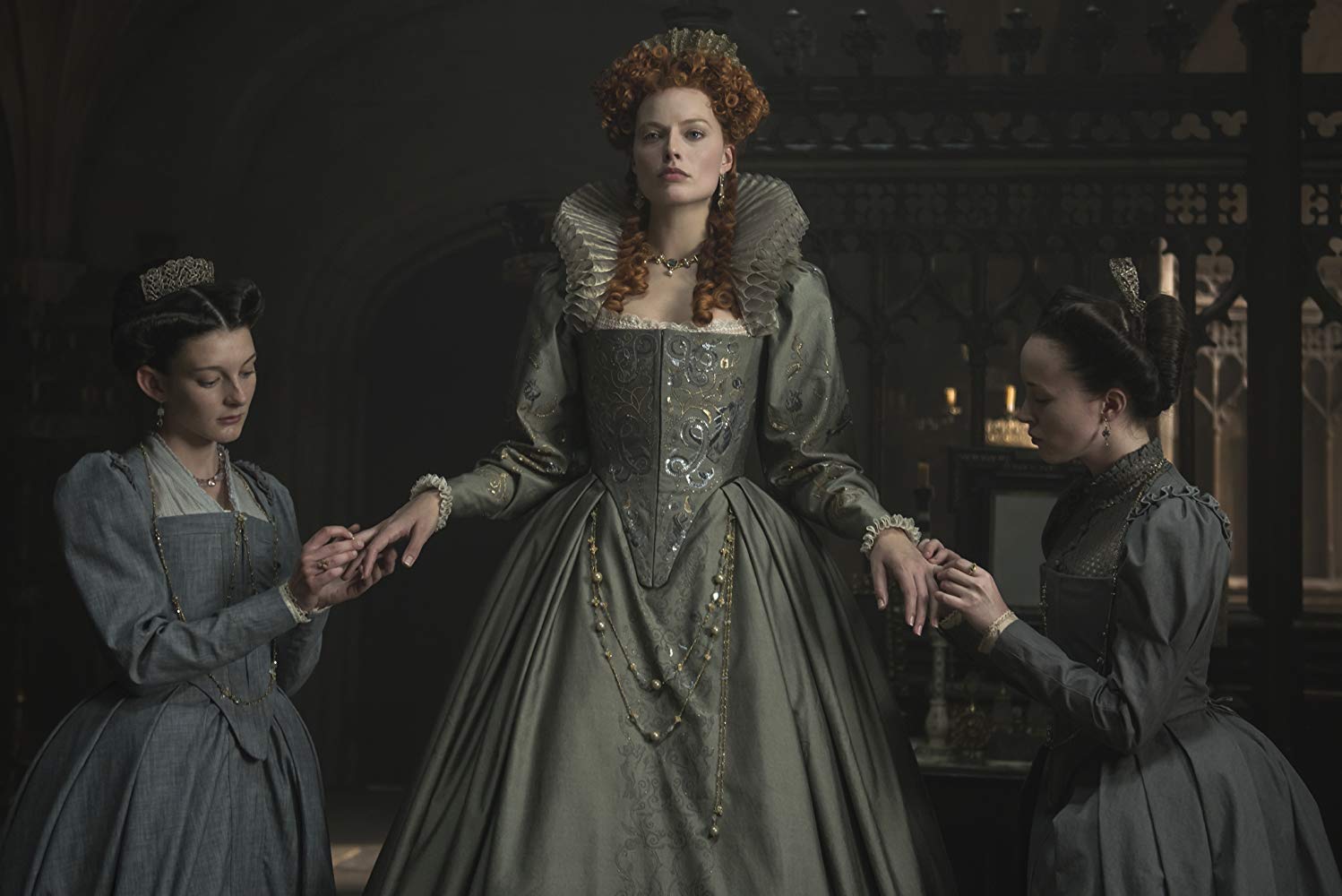Mary Queen of Scots brings one of the more bonkers periods of British history to the big screen—a chapter that was invariably flattened at some point by American public school into a sea of Elizabeths, Harrys, and Jameses.
Mary Stuart, known also as Mary I of Scotland, was born the only legitimate heir of Scottish King James V, and she became queen at six days old due to his untimely death. A series of political plots and arranged marriages resulted in her plausible claim to the French throne and, eventually, the English throne. Though Elizabeth I became Queen of England, both felt their claim was legitimate. Elizabeth’s support fell along Protestant lines, while Mary’s followers were Catholic adherents.
The film, starring Saoirse Ronan as Mary and Margot Robbie as Elizabeth, focuses on the queens’ feuding, as well as Mary’s desire to unify Scotland and England under her rule. Both queens also spend considerable time plotting the conception of a suitable heir to extend their lineage in their absence. Most of the screen time is spent dramatizing the catch-22s of female rulership—namely, producing such an heir without ceding power to men. But, to produce a child, each queen requires a husband—a dangerous decision in an era when husbands ruthlessly subjugate their wives. It’s made all the more dicey because each woman’s court is dominated by men, many of whom thirst for the power to rule as king.

Like many period pieces, everything about the film oozes a kind of grandiosity. It’s visually decadent, with sweeping vistas of the Scottish highlands and lingering shots of castles that make humans look ant-sized in comparison. Elizabeth and Mary are each dressed resplendently, placed at the forefront of each shot whether standing in a room of all-male advisors or riding on horseback into battle.
These cinematic techniques lend the film, and the film’s two dueling monarchs, an air of elevated importance. Robbie and Ronan capitalize on this in every possible way, delivering performances befitting their royal titles. Robbie is captivating as a woman aware of her power and willing to sacrifice her most personal dreams in order to maintain it. Ronan shines as a symbol of brazen confidence and fertility, a rash foil to to her more mature counterpart.
Where this film distinguishes itself from other period pieces is in its dedication to humanizing female rulers. Viewers are treated to the geopolitical strategies that rule Mary and Elizabeth's decision making, as well as the bleak interior lives they lead in order to execute these grand plans. It’s not the kind of territory most period pieces have tread, mostly because period pieces don’t normally center on the lives of women who are actually in power.
Honestly, it’s not pleasant. These leaders, like many of their male counterparts, are forced to make difficult, horrendous decisions. And because they’re both women in an era that was, frankly, awful for women, they each become victims of terrible circumstance as well as terrible men. This toxicity steals power from the film’s most powerful scenes, where Elizabeth and Mary are actually directly pitted against each other. So much of the film’s emotional arc is told in the sparing moments they interact. It’s like watching a protracted chess game, told in messages from consorts and smash cuts from Mary’s camp to Elizabeth’s castle. They highlight the precocious tit-for-tat of rulership, and help us find similarities in what appear to be stark differences.
Some of these moments are quite literal. A scene where Mary is splayed on a blood soaked sheet post-childbirth cuts directly to a scene where Elizabeth sits with a sea of red paper flowers she has made between her legs. The moment they finally meet in person is electric. You almost just want a supercut of Robbie and Ronan going toe to toe, as opposed to the interchangeable bearded men we watch repeatedly conspire against them.
About halfway through, it becomes apparent what a self-flagellating enterprise the whole saga is. Mary’s closest allies are brutally murdered. She’s married against her will, raped, and repeatedly branded a whore by a zealous Protestant religious leader. On the other end, Elizabeth becomes ill with smallpox, a violent disease that leaves her infertile—”barren” as Mary eventually calls her. This is devastating to a woman who desperately wants a child, but it is also a nail in the coffin of succession.
At some point, Mary Queen of Scots becomes an exercise in examining the ways even the world’s most powerful women must capitulate to the horrible men around them. It’s far from being the sort of “female empowerment” film that you might assume based off of the trailers. It feels a little more like being flogged with misogyny.
Sign up for our newsletter to get the best of VICE delivered to your inbox daily.
Follow Nicole Clark on Twitter.
from VICE https://ift.tt/2RZWLZ5
via cheap web hosting
No comments:
Post a Comment